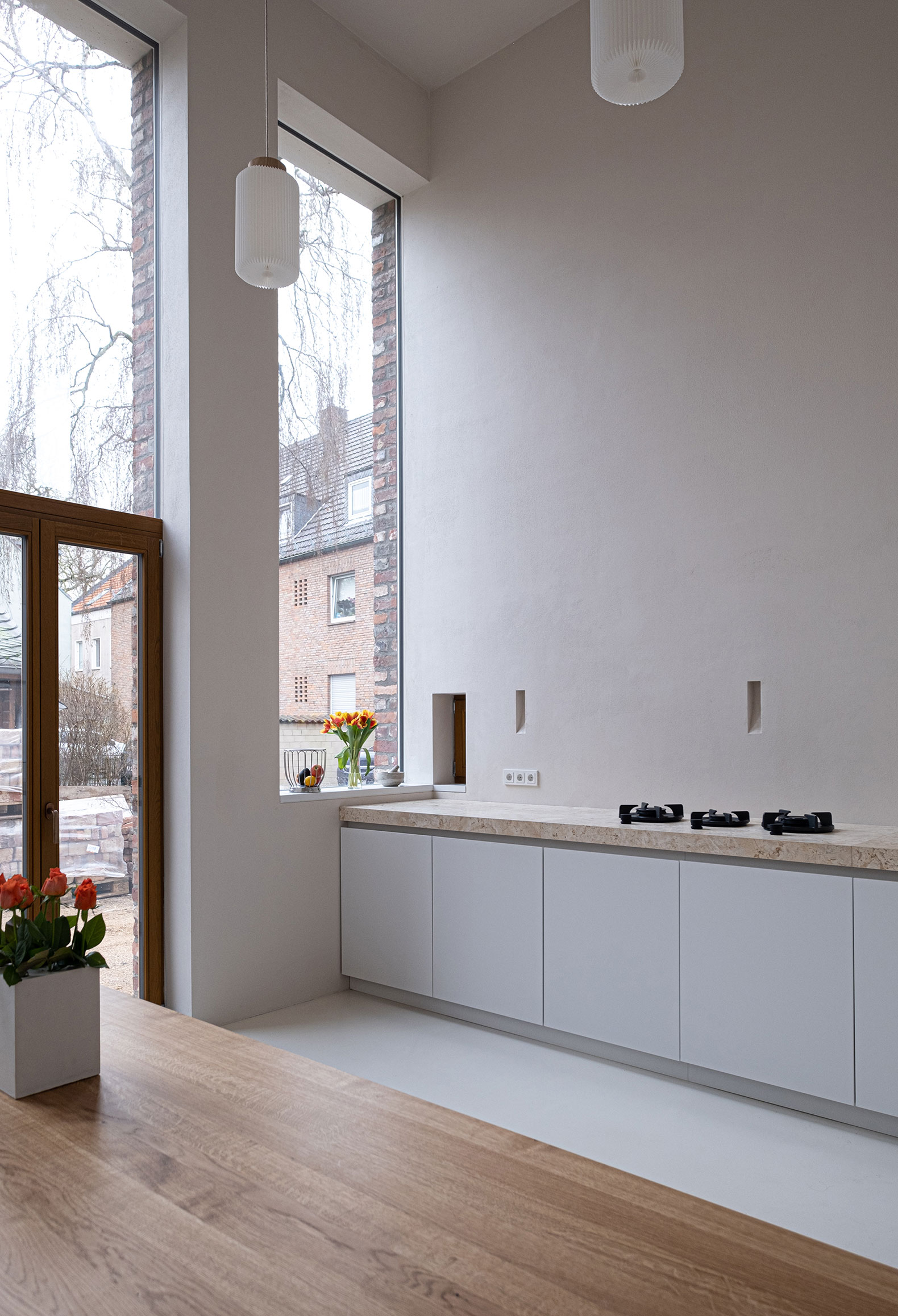Following a clear concept focused on sustainability, historical value, and its resilient capacity, for its interior comfort the home has a heat pump that obtains heat geothermally, this being one of the keys to the project. On the outside, an existing patio acts as a transition space with the alley, favoring its urban integration.

Project description by Till Robin Kurz
The single-family house at Katzengasse 18 is located on the left bank of the Rhine in the former farmer and fishing village of Cologne Niehl. It replaces a single-storey fisherman's house from the middle of the 19th century, which could not meet today's requirements for a single-family house. In contrast to its predecessor, the house was set back by about 4 metres from the northern boundary of the property. This creates a small courtyard that mediates between the house and the alley. The urban reorganization in terms of location and eaves height will strengthen the "urban space" of Katzengasse.
Field Burnstones
During the dismantling of the previous building by hand by the architect, about 10,000 old field fire stones were cleaned and later reinstalled as facing shells in the new building. The approximately 170-year-old material was transferred to the new building according to the "cradle to cradle" principle in order to create a strong connection to the history of the place and thus transform the past in a sustainable way.

K18 House by Till Robin Kurz. Photograph by Robinson Tilly.
Concept
The K18 house, with its precisely designed spatial sequences, which are preceded by deliberate theories of spatial experience, prototypically demonstrates how a residential building with small dimensions and areas appears generous through the inclusion of outdoor space and a clear concept.
Energetic concept
The house K18 is geothermally heated with a brine-water heat pump. A fresh water station with a buffer tank is used for hot water heating, which preheats the hot water with the heating water via a heat exchanger.












































































